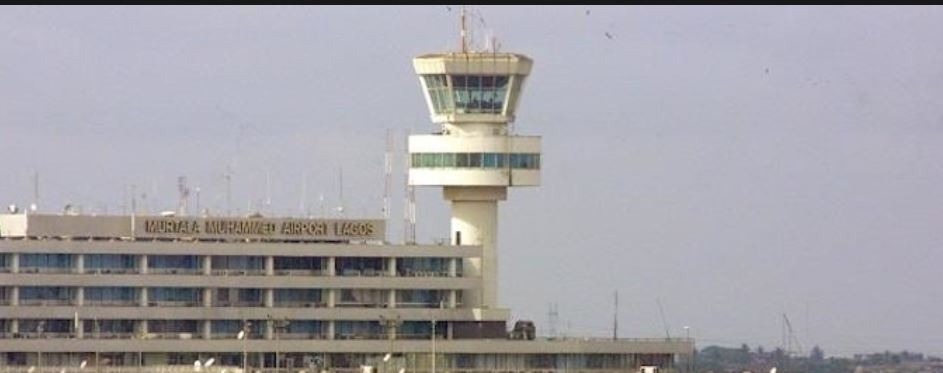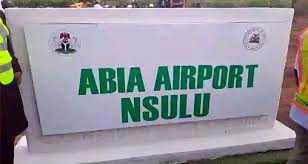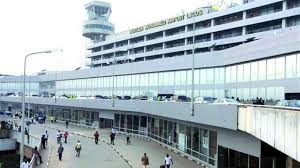A senior member of the Airline Operators of Nigeria, AON, Roland Iyayi, was one of the resource persons at the Quarterly Business Meeting of the Aviation Safety Round Table, ASRT, held recently in Lagos.
At the event themed: ‘The Implications of the Capetown Practice Direction on the Fortunes of Nigerian Airlines and the Economy,’ the Chief Executive Officer of Topbrass Aviation lamented the 22-year aircraft age limit in Nigeria. Iyayi, who argued that the age limit is an impediment to the growth of the air transport sector and tourism, called for a review. Excerpts:
Airports and airstrips
A lot of us don’t know this: there are currently 31 airports in this country with about five or so ongoing projects. In addition, we have about 91 airstrips. You might want to ask where these airstrips are. Well, if you fly between Abuja and Lagos and you are sitting on the left side of an airplane, the port side, after 10 minutes of takeoff out of Abuja, you look down to your left, there is an airstrip. If you look out again after five minutes, there is another airstrip.
CTC commendable, benefits not immediate
We have this practice (Cape Town Convention) that has just been put in place. Indeed there are benefits to it. Nigerian airlines can have access to dry leases, affordable in the long term. But the benefit is not actually something we would realise today. The reason is very simple. With what has happened all over the world, most major airlines planned that in 2025, they will engage in a global fleet renewal plan. When that happens, it means that the current fleet will be put in the open market and they take new deliveries.
Manufacturing issues
The reason that is not happening simply is that globally, major manufacturers as we speak: the Boeings, Airbus and Embraers have major manufacturing issues. With Boeing, we have quality issues. With Airbus, we have a major issue concerning the engine manufacturers providing engines for the airframes they are producing to be had at the right time. Before all of these issues, we had the ripple effect of the pandemic. During COVID, the major issues the world suffered was degradation in the global logistics supply chain.
Delay in delivery
A lot of supplies were not delivered on time to various manufacturers and that impacted the production capacities of most manufacturers. As a Nigerian domestic airline, you are looking to be able to acquire aircraft on the premise of this new practice that has just been put in place. But Turkish Airlines that has about 30 engines which they were going to put in the market with the delivery of their MAX are no longer willing to do that because there is a delay in delivery.
Backlogs
For the record, as of October 2024, the single airplane manufacturer, Airbus, had orders of about 10,888 A320neo series. Of those, 3,607 had been delivered. There is a backlog of about 7,000 airframes. Boeing with the 737 Max had an order of 4,793, but deliveries to date are 1,654 airframes. For me, what that means is that with a backlog of 3,000 airplanes, before the current operators of the Boeing aircraft that would be renewed with those new deliveries would put these airplanes in the market for African airlines to have access, we are talking about the next five to 10 years.
Age limitation
By the way, the average age of an engine today is 18 years. By the time these assets are available to be eased into the Nigerian and African markets, the age limitation that we impose on ourselves would have caught up with the fleet. How did this age limitation come into play in Nigeria? A lot of us do not even understand it, but we woke up and, of course, there was an age restriction. I will tell us a short story. Several years ago, we had a minister who, based on political motives at the time, felt there was a need to stop a particular airline from coming into the domestic market. We may not know this.
Albarka Air
The airline at the time, I will say the name because it is no longer in existence, Albarka Air. At the time, Albarka Air had about seven airplanes in the United States ready to come into the country. The owner of Albarka Air was in the opposite part of the political divide. What happened? It was determined that the only way to stop Albarka from coming into the market was to impose an age restriction. The age restriction suggested was 20 years. However, when it was determined that the Boeing 727 presidential jet was 21 years old, it became 22. This story is probably not known to the public. The reason that particular age limitation was introduced was purely political. Somehow today, it has found its way into our law books. What do we do to ourselves? We are shooting ourselves in the foot.
Growth
The law limiting the age of aircraft coming into the country does not bode well for the growth of our industry. And the sooner we look at it, take cognisance of the various issues, the better for the industry. We are talking about growth. The growth we anticipate will not come. It is important that we note that in most of the times we come up with policies, our policies are not founded on any empirical data. Those policies are founded just by the whims and caprices of whoever is in office as a solution to a political problem rather than a safety problem. When you look at what is going on generally in the domestic space, all the airplanes we are operating today, even in our domestic commercial market, are more than 22 years old, except the likes of Air Peace, with the new airplanes coming in, Ibom Air, ValueJet, Overland and maybe Arik. If we allow unfettered access to airplanes that are available commercially, we may be able to grow our industry in the right direction.
Capacity without growth
One of the things we may not understand with this practice (CTC) is that when it actually comes to the fore, the type of capacity we will be getting into the country will be the single-aisle aircraft, the 737s and the A320s airplanes. The Airbuses in the A220 category and the Embraer E2s already have issues with engines. There are major issues there, so we do not anticipate any growth in that direction in the long term, at least in the foreseeable future.
Destructive competition
If you take cognisance of the fact that the only airplanes that can be available based on this practice are airplanes that are in the category of 100 to 150 seats, you now ask the question, where can you operate these types of airplanes in our domestic market and be profitable? The issue of profitability comes into the economics of operation and is key for the survival of any domestic carrier. So what we will end up with, very simply, if you bring in more 737s, which I believe is what will happen, we will end up with increased destructive competition. And how is that? Four of our major routes in this country account for over 80 per cent of our total traffic in the domestic market. Lagos, Abuja, Port Harcourt and Kano.
Those four airports are the ones that indeed can take the capacities we are talking about. We have 11 airports in this country accounting for about 95 per cent of our total traffic. The other seven airports are secondary airports. The likes of Owerri, Asaba and the rest of them. Invariably, what this will do is give additional capacity into our markets, but it will engender more destructive competition. Another problem that needs to be looked at, we talk about low-cost carriers, we talk about everything. The theory of it makes sense, but in practice, Nigeria does not allow those business models to thrive.
Irrelevant policies
reviewed them, amended them to adapt to the current realities. So we have a problem.
Age limitation
By the time all the airplanes that can be available to the domestic market are arriving in Nigeria, they will be about 22, 23 years old. And by the way, we have created again in the international market a Nigerian factor. If you go to buy an aircraft today, and that aircraft is 18 years old, 18 years old is by the way cheaper in some cases than an aircraft that is 21 years old. Because once they talk about a 21 years old aircraft, they know you are Nigerian. And that aircraft is going into Nigeria. So they price it for Nigeria. That is what is happening. And that is because we created a law that is not known to any other part of the world in this industry. People look at us and laugh, but they make fun of us because we created that situation for them. By the time all these airplanes that are coming off other airline fleets will be available to come into Nigeria, they will have been caught up by the 22 year old age ban.
Tiered licensing of airlines
So what happens? The Aviation Safety Roundtable Initiative several times have advocated that we should be talking about the tiered licensing of airlines in the country. By the way, the task force that I represent, we are also talking about recommending that highly to the government. Why? I talked about 91 airstrips. You can not fly a Boeing 737 into an airstrip that is 500 metres long. Our tourism industry is dead. Non-existent. But we do have a lot of tourist sites in the country. Kenya and most East African countries thrive on tourism. And they do not have those numbers to support that industry as well as we do.
Complete ecosystem
If anything today, those airstrips we have and those airports should be opportunities for the domestic market. Assuming we had airplanes that are structured for 19 seats, 30 seats, that can go into markets where you do not have numbers to support the 737s, the operating economics of such types would make any airline operating in the niche market more viable. But we are not doing that. We are not looking at those little bits.
Except of course we have a complete ecosystem that will take cognisance of the different segments of our market, it would be almost impossible to thrive in this system. The Nigerian aviation industry has the opportunity for tremendous growth. But that growth element of it must be supported deliberately, intentionally by government policy.
And that policy must be tailored to the needs of the country.



